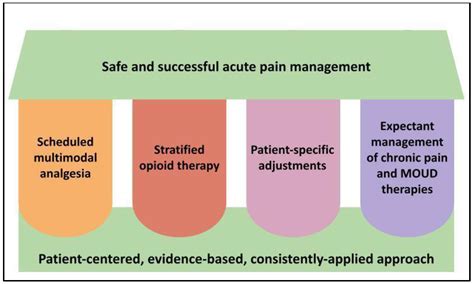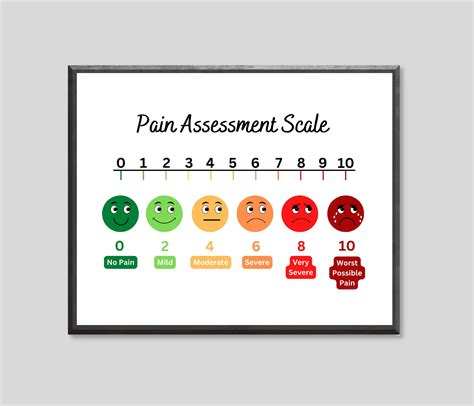Intro
Effective nursing interventions for acute pain management strategies are crucial for patient comfort and recovery. Discover evidence-based techniques, including pharmacological and non-pharmacological methods, to alleviate acute pain and improve patient outcomes. Learn how to assess, prioritize, and implement individualized pain management plans, reducing discomfort and promoting holistic well-being.
Acute pain is a common and distressing symptom that affects millions of people worldwide. It can be caused by various factors, such as surgery, injury, or illness, and can have a significant impact on a person's quality of life. As a crucial part of the healthcare team, nurses play a vital role in managing acute pain and improving patient outcomes. In this article, we will discuss the importance of acute pain management, the role of nurses in pain management, and evidence-based nursing interventions for acute pain management strategies.

The Importance of Acute Pain Management
Acute pain is a complex phenomenon that involves multiple physiological, psychological, and emotional factors. If left unmanaged, acute pain can lead to chronic pain, anxiety, depression, and decreased quality of life. Moreover, unmanaged pain can also lead to increased healthcare costs, longer hospital stays, and decreased patient satisfaction. Therefore, effective acute pain management is crucial to improve patient outcomes and quality of life.
The Role of Nurses in Pain Management
Nurses are at the forefront of pain management, and their role is critical in assessing, planning, implementing, and evaluating pain management strategies. Nurses are responsible for assessing patients' pain levels, identifying potential causes of pain, and developing individualized pain management plans. They also play a key role in educating patients and their families about pain management strategies, providing emotional support, and advocating for patients' needs.
Assessment of Acute Pain
Assessment of acute pain is a critical step in pain management. Nurses use various assessment tools, such as the Numerical Rating Scale (NRS), Faces Pain Scale (FPS), and Brief Pain Inventory (BPI), to assess patients' pain levels. They also assess patients' medical history, laboratory results, and physical examination findings to identify potential causes of pain.

Pharmacological Interventions
Pharmacological interventions are a crucial part of acute pain management. Nurses use various medications, such as opioids, nonsteroidal anti-inflammatory drugs (NSAIDs), and acetaminophen, to manage pain. They also use adjuvant medications, such as gabapentin and pregabalin, to enhance pain relief.
- Opioids: Opioids, such as morphine and fentanyl, are commonly used to manage acute pain. However, they can be associated with side effects, such as respiratory depression and constipation.
- NSAIDs: NSAIDs, such as ibuprofen and naproxen, are commonly used to manage mild to moderate pain. However, they can be associated with side effects, such as gastrointestinal bleeding and renal impairment.
- Acetaminophen: Acetaminophen is commonly used to manage mild to moderate pain. However, it can be associated with side effects, such as liver damage and allergic reactions.
Non-Pharmacological Interventions
Non-pharmacological interventions are also crucial in acute pain management. Nurses use various non-pharmacological interventions, such as relaxation techniques, distraction, and positioning, to manage pain.
- Relaxation techniques: Relaxation techniques, such as deep breathing and progressive muscle relaxation, can help reduce pain and anxiety.
- Distraction: Distraction, such as watching TV or listening to music, can help divert patients' attention away from pain.
- Positioning: Positioning, such as changing patients' positions regularly, can help reduce pain and discomfort.

Alternative Therapies
Alternative therapies, such as acupuncture and massage, are also used in acute pain management. These therapies can help reduce pain and anxiety, improve sleep, and enhance overall well-being.
- Acupuncture: Acupuncture involves the insertion of fine needles into specific points on the body to stimulate healing and pain relief.
- Massage: Massage involves the manipulation of soft tissues to reduce pain and anxiety, improve sleep, and enhance overall well-being.

Educating Patients and Families
Educating patients and families is a critical part of acute pain management. Nurses educate patients and families about pain management strategies, provide emotional support, and advocate for patients' needs.
- Pain management strategies: Nurses educate patients and families about pain management strategies, such as relaxation techniques, distraction, and positioning.
- Medication management: Nurses educate patients and families about medication management, including dosing, side effects, and potential interactions.
- Emotional support: Nurses provide emotional support to patients and families, addressing concerns and fears about pain and treatment.

Conclusion
Acute pain management is a complex phenomenon that requires a multidisciplinary approach. Nurses play a critical role in assessing, planning, implementing, and evaluating pain management strategies. By using a combination of pharmacological and non-pharmacological interventions, alternative therapies, and educating patients and families, nurses can improve patient outcomes and quality of life.
What is acute pain?
+Acute pain is a type of pain that is typically sudden in onset and short in duration, usually lasting less than 3 months.
What are the causes of acute pain?
+Acute pain can be caused by various factors, such as surgery, injury, or illness.
What are the consequences of unmanaged acute pain?
+Unmanaged acute pain can lead to chronic pain, anxiety, depression, and decreased quality of life.
